 Image search results - "mihara" Image search results - "mihara" |

From late April to early May, five long strings of giant carp streamers swim in the air high above the Sagami River in Sagamihara, Kanagawa. This event was started in 1988.
|
|

There are five rows of streamers. In Japan, the koi carp is regarded as a symbol of valiant manhood because it swims up the river against the rapids.
|
|

The cable length is 250 meters and 13mmm thick. There are about 1,200 carp streamers. They are reused every year and donated by local families. (I also noticed a few advertising carps.)
|
|
|
|
|

Sagami River Koi-nobori
|
|
|
|
|
|

The longest carp is 10 meters.
|
|
|

Along the river were food stalls.
|
|

Festival site
|
|

Cable anchor
|
|
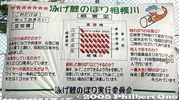
Statistics
|
|
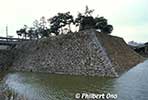
Mihara Castle tenshu main tower foundation and moat. No buildings remain.
|
|
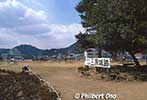
A park on top of the Mihara Castle site.
|
|
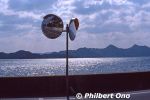
Mt. Fudekage is 313 meters high and part of the Seto Inland Sea National Park. Great views of Seto Inland Sea and Shikoku from Mihara, Hiroshima.
|
|

From JR Mihara Station, there's a local bus that goes up to Mt. Fudekage taking 7 min. Otherwise, it's a 50-min. hike from JR Sunami Station (JR Kure Line).
|
|
|
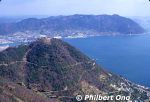
Looking east.
|
|

View of Seto Inland Sea from Mt. Fudekage in Mihara, Hiroshima.
|
|

View of Seto Inland Sea from Mt. Fudekage in Mihara, Hiroshima. you can see Kosagi in the foreground, Sagi, and Hoso islands. In the distance on the right is Innoshima and part of the Shimanami Kaido bridge connecting Shikoku (Imabari) and Hiroshima.
|
|

Mt. Fudekage has a lookout deck for great views.
|
|

View of Seto Inland Sea from Mt. Fudekage in Mihara, Hiroshima.
|
|
|
|

View of Seto Inland Sea from Mt. Fudekage in Mihara, Hiroshima.
|
|
|
|

View of central Mihara (area around Mihara Station) from Mt. Fudekage in Mihara, Hiroshima.
|
|

View of central Mihara (area around Mihara Station) from Mt. Fudekage in Mihara, Hiroshima.
|
|

JR Sunami Station (JR Kure Line) is the closest to Mt. Fudekage. Then it's a 50-min. hike up. 須波駅
|
|
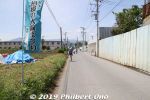
Held annually on May 4 and 5 along the Sagami River from 10 am to 4 pm. Nearest train station is Sobudaishita Station on the JR Sagami Line (20-min. walk to the festival site). They have shuttle buses from the train station to festival site, but I walked.
|
|
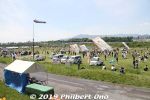
The site is a riverside park. They fly the giant kite a few times each day depending on the wind. Photos were taken on May 5, 2019.
|
|
|
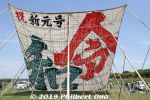
In May 2019, the giant kite celebrated the new Reiwa Era by having the kanji characters for Reiwa on the giant kite.
|
|
|
|
|
|
|
|
|
|
|
|
|
|
|
|
|
|
|
|
|
|
|
|
|
|
|
|
|
|
|
|
|
|
|
|
|
|
|
|
|
|
|
|
|
|
|
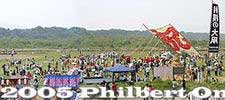
Sagami Giant Kite festival is held annually on May 4 and 5 along the Sagami River bank. The site is near JR Sobudaishita (相武台下) on the JR Sagami Line.
|
|

Lean-to shade.
|
|
|

Rear view
|
|

Entertainment during Sagami Giant Kite Festival
|
|

Take off of a smaller kite
|
|
|
|

Take off of another smaller kite
|
|
|
|
|

Successful flight
|
|

Anchor
|
|

Preparing the big one.
|
|
|
|
|

Bamboo poles used to prop up the giant kite.
|
|

Moving the giant kite to launch site
|
|
|
|
|

Spectators watch along the side and rear.
|
|
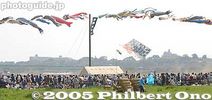
Sagamihara city is adjacent to Zama city which also held their own giant kite festival on the same day adjacent to Sagamihara's site. This is a launch of Zama's giant kite which soon went back to the ground due to inadequate winds.
|
|

The site is cleared of people before the launch.
|
|

Inadequate winds. The kite struggles to lift off.
|
|

The kite went back down almost immediately after hovering a few feet above ground.
|
|
|
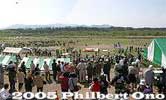
Panorama of festival site.
|
|
|
|

Preparing the giant kite
|
|
|
|
|
|

Moving the kite to launch point
|
|
|
|
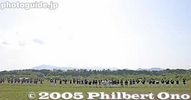
Kite pullers
|
|
|

And we have lift off!
|
|
|

TakoKites in the shape of an octopus is common because the Japanese word for kite is "tako" which is the same pronunciation for the word octopus in Japanese.
|
|

Guest kite from Yokaichi, Shiga PrefectureThis is a smaller version of their giant kite. Yokaichi (Higashi Omi) also holds a giant kite festival in May.
|
|

Yokaichi's anchor truck
|
|

Beautiful lavendar
|
|

Another launchThey fly the kite a few times during the festival days.
|
|
|
|
|
|
|
|

Rope anchor
|
|
|

DisassemblyThe paper is actually large strips that can be removed and rolled up.
|
|
|
|
|
|
|